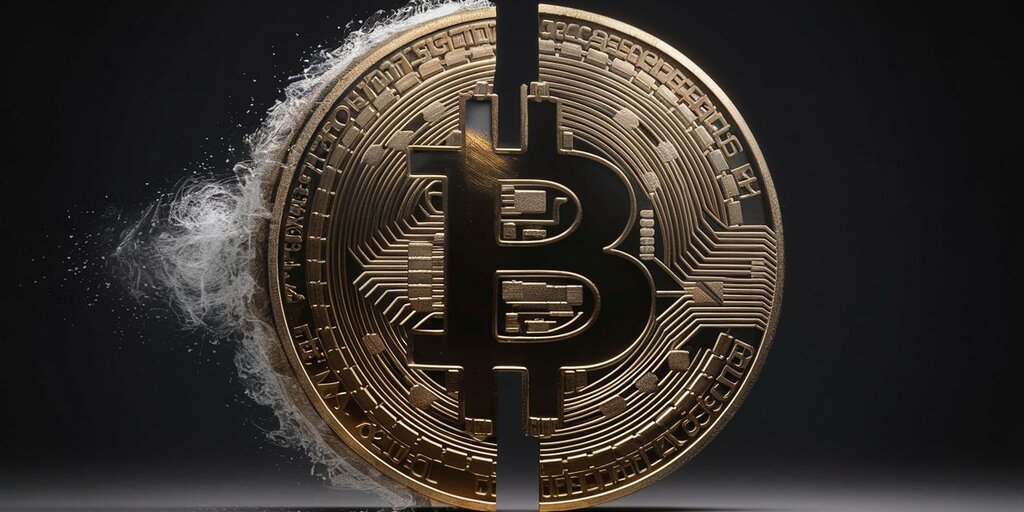In brief
- Bitcoin's quadrennial halving occurred a year ago, reducing block rewards for miners by half.
- Traditionally, Bitcoin's price surges one year post-halving due to a decreased supply of new coins.
- Although Bitcoin reached a new high, the percentage growth is the weakest on record compared to previous cycles.
It's been one year since Bitcoin experienced its quadrennial halving, an event that typically propels its price upward. Despite Bitcoin achieving an all-time high post-halving in April 2024, the percentage increase has been underwhelming compared to historical trends.
According to data provider Kaiko, while Bitcoin's price has risen, macroeconomic factors have impacted its performance significantly. Kaiko noted that the current increases represent the weakest post-halving performance in terms of percentage growth.
As of recent data, Bitcoin was priced around $95,000, reflecting a 49% increase since the halving. In contrast, previous cycles have seen gains in the three to four-digit percentages within the same timeframe.
Kaiko's Senior Analyst, Dessislava Aubert, stated that the unprecedented high-interest rates and current economic uncertainties have adversely affected Bitcoin's growth trajectory.
Bitcoin has historically thrived in low-interest environments alongside other risk-on assets. However, recent investor fears surrounding trade wars and economic instability have dampened expectations for significant price increases.
For context, Bitcoin's price before its first halving in 2012 was just $12.35, skyrocketing to $964 a year later—a nearly 8,000% gain. Following the 2016 halving, Bitcoin surged from $663 to $2,500, marking a 277% increase. The 2020 halving saw BTC rise from $8,500 to an all-time high of over $69,000, a 762% rise.
Currently, the last halving reduced miners' rewards from 6.25 BTC to 3.125 BTC, yet Bitcoin's price is only about 50% higher than it was a year ago, leaving many experts puzzled. They had anticipated that the halving and the approval of spot Bitcoin ETFs would lead to a robust market performance.
Disappointment extends beyond retail investors; the mining sector is also feeling the strain. A lower Bitcoin price compels miners to liquidate coins more frequently to meet operational costs.
Despite the challenges, some industry leaders believe that miners should have anticipated a less vigorous rally this time around. Shanon Squires, Chief Mining Officer at Compass Mining, emphasized the importance of optimizing operational expenses and managing expectations realistically, stating that those who anticipated a $1 million Bitcoin were likely out of touch with the market realities.




Comments
Join Our Community
Sign up to share your thoughts, engage with others, and become part of our growing community.
No comments yet
Be the first to share your thoughts and start the conversation!